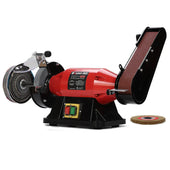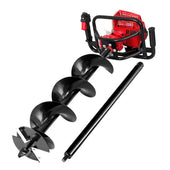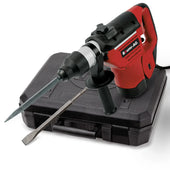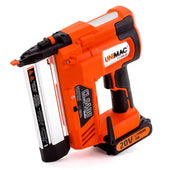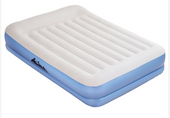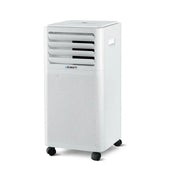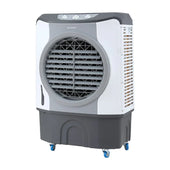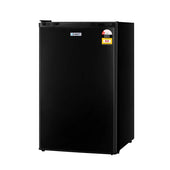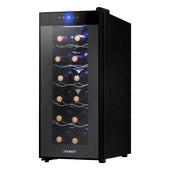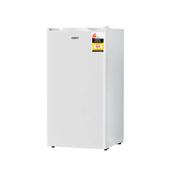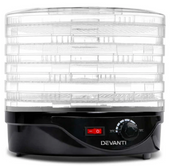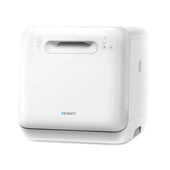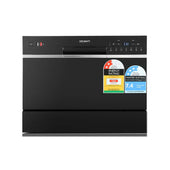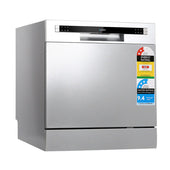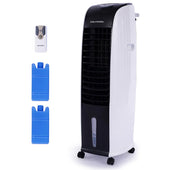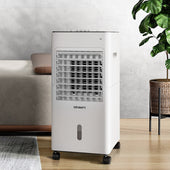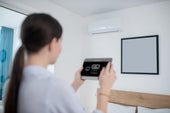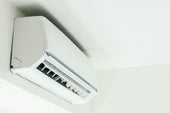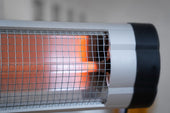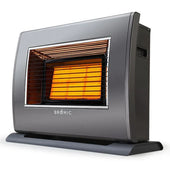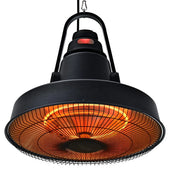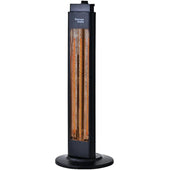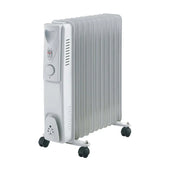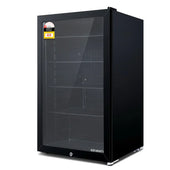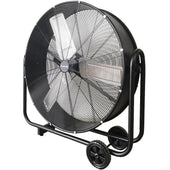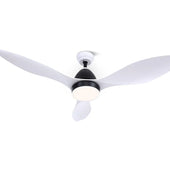Understanding Your Laptop Needs
Choosing the right laptop starts with identifying the primary purpose for its use. Users seeking a laptop for office tasks may prioritise portability, battery life, and mid-range performance. Creative professionals, such as graphic designers, typically require powerful processors, vibrant displays with colour accuracy, and ample RAM. Gamers, on the other hand, will need dedicated graphics cards, high refresh-rate screens, and robust cooling systems to support demanding games.
Consider storage needs as well—casual users may suffice with smaller SSDs, while data-heavy professionals might need larger capacities. Connectivity options like USB-C, HDMI, or Ethernet ports During Days, should align with users’ work environments. Selecting based on individual requirements ensures efficiency and satisfaction with the chosen device.
Setting Your Budget
Choosing a laptop starts with understanding your budget. A well-defined budget helps narrow down options, avoiding overspending or settling for a machine that lacks essential features. Review your financial limits and evaluate what you can realistically afford without compromising long-term value.
Prices generally fall into categories:
- Entry-level (£300–£600): Ideal for basic tasks like internet browsing, word processing, and light media consumption.
- Mid-range (£700–£1,200): Suitable for students, professionals, and typical workloads, offering better performance and durability.
- High-end (£1,300+): Necessary for demanding users such as gamers, creative professionals, or developers needing specialised specs.
Consider upcoming sales and compare brands to maximise savings while fulfilling your requirements.
Operating System Options: Windows, macOS, or Linux?
Choosing the right operating system is pivotal when selecting a laptop, as it defines usability and compatibility with specific tasks.
- Windows: Known for its versatility, Windows supports an extensive range of software, particularly for gaming, productivity, and enterprise applications. It is compatible with a wide variety of hardware and devices.
- macOS: Exclusively available on Apple laptops, macOS offers seamless integration with other Apple products and prioritises user experience. It is favoured by creative professionals for its optimised design and robust multimedia tools.
- Linux: Popular among developers, Linux provides extensive customisation, open-source freedom, and strong security. Although it demands technical knowledge, it excels in programming, server management, and efficiency.
Understanding workflow requirements aids in making an informed decision.
Choosing the Right Processor
The processor, often referred to as the CPU, acts as the brain of a laptop, handling all computations and tasks. The choice of processor depends on the intended use of the laptop, with factors like speed, cores, and generation playing a pivotal role. When comparing processors, look for models from trusted manufacturers like Intel or AMD.
Key considerations include:
- Performance: For basic tasks like web browsing or word processing, dual-core processors are sufficient, while quad-core or higher is recommended for video editing, gaming, or programming.
- Clock Speed: Measured in GHz, higher speeds ensure quicker task execution.
- Generation: Newer generations offer better efficiency, performance, and thermal management.
- Power Consumption: Devices requiring portability may benefit from energy-efficient CPUs like Intel’s “U” series or AMD’s Ryzen processors.
Keep in mind compatibility with other laptop components to ensure balanced performance.
RAM and Storage: What Do You Need?
When deciding on RAM needs, consider your primary usage. 4GB is adequate for light tasks such as browsing and word processing, but 8GB is preferred for multitasking and moderate workloads. Professionals editing videos or running virtual machines benefit from 16GB or more. Faster RAM improves performance, particularly for memory-intensive applications.
Storage choice depends on the type and capacity. Solid-State Drives (SSDs) offer faster speeds and reliability compared to traditional Hard Disk Drives (HDDs). A 256GB SSD is suitable for most users, while professionals may need 512GB or more for large files. Hybrid solutions, combining SSDs for primary storage and HDDs for backups, balance speed and capacity effectively.
Display Size and Quality
The display size and quality of a laptop significantly affect usability and overall experience. Display sizes generally range from 11 inches to 17 inches. Smaller screens are more portable, making them ideal for travel, while larger screens are better suited for productivity tasks such as video editing or working with multiple windows.
Screen resolution is another crucial factor. A Full HD resolution (1920 x 1080) provides sharp visuals and is standard for most laptops. Higher resolutions like 4K deliver greater detail but require more battery and processing power. Additionally, technologies like OLED and IPS panels enhance colour accuracy and viewing angles, benefiting creatives and gamers.
Portability and Build Quality
When selecting a laptop, portability is a crucial factor for users who plan to carry their device frequently. Lightweight models, often weighing under 1.5 kilograms, are ideal for travellers, office commutes, and students. Build quality complements portability, ensuring laptops can withstand the rigours of daily use. Common materials include durable aluminium alloys or robust plastic casings, offering varying levels of sturdiness and style.
High-quality hinges and keyboards also contribute to longevity, particularly for professionals. Those prioritising portability should consider slim profiles and smaller screen sizes, while durable construction is recommended for rougher usage environments. Evaluating these elements ensures the laptop meets mobility and durability demands effectively.
Battery Life and Energy Efficiency
When selecting a laptop, assessing battery life and energy efficiency is paramount, particularly for users who need portability. The longevity of the battery depends on factors such as its capacity, measured in watt-hours (Wh), and the efficiency of the hardware components. Solid-state drives (SSD) and low-power CPUs are preferred choices for conserving energy.
Energy-efficient laptops often employ displays with In-Plane Switching (IPS) or OLED panels, which consume less power compared to older LCD technologies. Manufacturers also optimise software by integrating power-saving modes. Users should evaluate the typical runtime based on real-world usage scenarios, like web browsing or multimedia consumption, to ensure compatibility with their lifestyle.
Graphics Card and Gaming Requirements
The choice of graphics card depends heavily on the intended use of the laptop, particularly if gaming or graphic-intensive software is involved. Gaming laptops typically require dedicated GPUs, such as NVIDIA GeForce or AMD Radeon, to handle high-resolution textures, advanced lighting effects, and fast frame rates. Users who plan to play AAA titles or perform 3D rendering should look for GPUs with at least 4GB of VRAM.
Integrated graphics, like Intel Iris Xe, are suitable for casual gaming or light graphics work. It's also essential to check compatibility between game requirements and GPU capability. Additionally, ensure the laptop's cooling system prevents overheating during prolonged gaming sessions.
Connectivity and Ports
The range of connectivity options and ports on a laptop directly impacts its versatility. Laptops typically feature USB ports, such as USB-A and USB-C, with USB-C supporting faster data transfer and compatibility with advanced devices. HDMI ports are essential for connecting external monitors and projectors, further enhancing productivity. Thunderbolt ports offer high-speed data transmission and dual functionality for peripherals and displays. Ethernet ports ensure stable internet access, while an SD card reader benefits photographers and content creators. Wireless connectivity like Wi-Fi 6 and Bluetooth 5.0 improves device synchronisation and network performance. Balancing port availability with specific needs is crucial for efficient usage.
Additional Features to Consider
When selecting a laptop, it’s essential to evaluate features that align with specific needs beyond basic specifications.
- Battery Life: Consider laptops with long-lasting batteries, especially for users frequently on the move. Look for models offering fast-charging features.
- Build Quality and Durability: Metal casings provide more durability, while lighter materials enhance portability.
- Keyboard and Trackpad: High-quality keyboards with appropriate key travel are vital for extended typing sessions. A responsive, smooth trackpad ensures smoother interaction.
- Ports and Connectivity: Verify the availability of USB-C, HDMI, and Thunderbolt ports based on requirement.
- Webcam Quality: Crucial for video calls; aim for at least 720p resolution.
- Upgradability: Check if RAM or storage can be upgraded over time.
Subtle design features like backlit keyboards or touchscreens might improve user experience.
Top Brands and Reliable Models
When choosing a laptop, it is important to consider brands that consistently deliver quality and reliability. Major players like Apple, Dell, HP, Lenovo, and ASUS are recognised for innovation and performance across various categories. Apple MacBooks stand out for their seamless integration with the macOS ecosystem, excellent build quality, and high-resolution displays. Dell’s XPS series is preferred for premium design and robust hardware.
Lenovo offers versatility, particularly with its ThinkPad line, renowned for durability and productivity features. HP excels in business-focused laptops, while ASUS is celebrated for gaming-centric and budget-friendly models. Buyers should explore trusted models, including Dell XPS 15, Lenovo ThinkPad X1 Carbon, and HP Spectre x360.
Comparing Reviews and User Feedback
When evaluating laptops, reviews and user feedback provide valuable insights into their performance and reliability. Expert reviews often test features such as processing power, display quality, and battery life under controlled conditions. On the other hand, user feedback highlights real-world experiences, including durability and customer support.
To compare effectively:
- Look for consistent praises or complaints across multiple sources.
- Focus on aspects related to your specific requirements, such as gaming performance or portability.
- Check for reviews on trusted platforms to avoid biased opinions.
Additionally, forums and tech communities offer practical advice and potential solutions to common issues, enhancing your understanding of each model.
Where to Buy: Online vs. Retail Stores
When deciding where to purchase a laptop, individuals can choose between online platforms and physical retail stores, both offering distinct advantages.
Online Stores
- Pros: Online platforms provide convenience, often offering a broader selection of models and brands. Competitive pricing, frequent sales, and user reviews make it easier for consumers to compare options.
- Cons: Buyers cannot physically inspect laptops before purchase, relying instead on descriptions and images. Delivery times may vary, and technical support is less direct.
Retail Stores
- Pros: Retail outlets offer hands-on experience, letting customers test laptops for build and performance. On-site staff can provide tailored advice and immediate product availability.
- Cons: Selection may be limited compared to online stores, and prices can be higher due to overhead costs.
Identifying personal priorities is crucial to choosing the most suitable purchasing method.
Maintenance Tips for Longevity
Proper laptop maintenance ensures long-term performance and durability. Users should implement the following best practices:
- Keep the laptop clean: Regularly wipe the screen and keyboard with a microfiber cloth. Avoid using abrasive cleaners.
- Use a cooling pad: Overheating affects internal components. A cooling pad helps maintain safe operating temperatures.
- Update software routinely: Install updates for the operating system and drivers to enhance security and performance.
- Avoid overcharging the battery: Disconnect from power after a full charge to prevent damage.
- Store carefully: Use a padded case during travel and avoid exposing the laptop to extreme temperatures.
- Back up data regularly: Create backups to protect against potential hardware failures or data loss.



